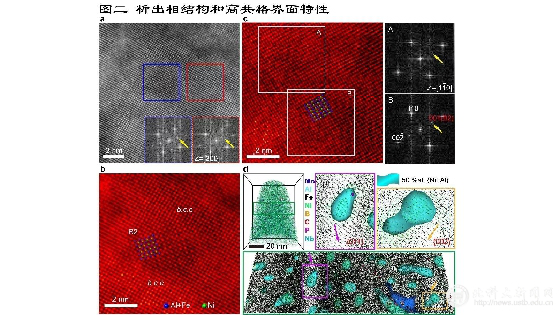News
The 2017 Top 10 Scientific Discoveries was released in Beijing, on February 27, 2018. The new generation of ultra-high-strength steel developed by Professor Lv Zhaoping’s research team at the University of Science and Technology Beijing is based on coherent nanoprecipitation strengthening. The discovery was selected as one of the Top 10 Scientific Discoveries of 2017. The corresponding research paper was published in Nature (Nature, 54 (7651): 460-464) on April 27, 2017.

Ultra-high-strength steel plays a supporting role in important areas of the national economy such as aerospace, transportation, advanced nuclear energy, and national defense equipment. It is a key material for future lightweight structural design and safety protection. However, for decades, research on high-performance ultra-high-strength steel tended to achieve its purpose by using traditional semi-coherent precipitation to produce coherent distortion. Such an approach allows for a limited number of precipitated phases and an unreasonable and unevenly distributed precipitation size, which reduce the plasticity and toughness of the material and seriously affect the safety of the results. In addition, the expensive preparation costs also limit its practical applications. Therefore, the development of ultra-high-strength steel has become a major challenge that hinders high-end steel industry’s development. Aiming at creating low-cost, high-performance steel, Professor Lv and the team proposed the innovative design idea of using a high-density coherent nanoprecipitation phase to strengthen an ultra-high-strength alloy. They replaced the expensive element (such as cobalt or titanium) in the maraging steel with light and cheap aluminum, which greatly reduced costs and promoted high-density, fully coherent nanoprecipitation phases with simple heat treatment, and developed a new generation of ultra-high-strength steel based on coherent nanoprecipitation strengthening. By regulating lattice mismatch, they created precipitated phases with extremely low-coherent distortion and high-order resistance, which greatly enhances the strength of the alloy without sacrificing its ductility. The disruptive alloy design ideas involved in this discovery can also be applied to the development of other structural materials. According to a special review article published by Nature Materials, “with the design ideas of a perfect ultra-high-strength maraging steel, simple alloying element, and precipitated phase strengthening, the study provided a new approach to developing structural materials with excellent strength and plasticity at a lower cost.”
The Top 10 Scientific Discoveries selection event is organized by the High Technology Research and Development Center of the Ministry of Science and Technology, and has been held for 13 sessions, as of 2018. The candidates for the top research discoveries were recommended by the editorial departments of China Basic Science, Science and Technology Review, Bulletin of the Chinese Academy of Sciences, Bulletin of National Natural Science Foundation of China, and Chinese Science Bulletin. Next, the academicians of the Chinese Academy of Sciences and Chinese Academy of Engineering, experts from the advisory and consultant group of Program 973, leading researchers of projects including Program 973, and directors of key laboratories in China were invited to participate in the two rounds of elections before the final list was determined. The selection of top scientific discoveries aims to strengthen the publicity of the progress of major basic research in China; encourage the scientific enthusiasm and dedication of scientific and technological workers; promote the understanding, care, and support for public science; and create a good scientific atmosphere in society. This activity has become a brand of communication of basic research achievements in China and has been well-received in the scientific and technological community.